Startups at CES 2019: Part Two. Strange and magical gadgets
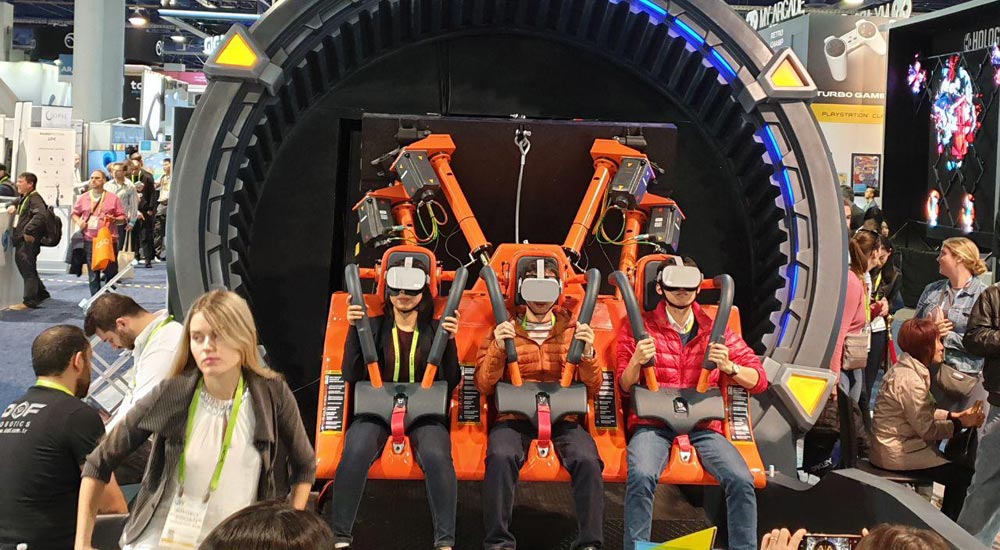
In the previous part, we wrote about what gadgets saw at the international consumer electronics show in Las Vegas, known as CES. They told about robots, smart mirrors, smart umbrellas, smart gardens, Japanese clever cat trays (yes, seriously). In this part we will tell about other smart devices of this year.
Smart toys
Kano Harry Potter Coding Kit: programming is magic!
London-based startup Kano has developed a toy magic wand that teaches the basics of programming. A device called Harry Potter Coding Kit in Las Vegas was shown for the second year in a row, but only in 2019 it won the Best of Innovation award.
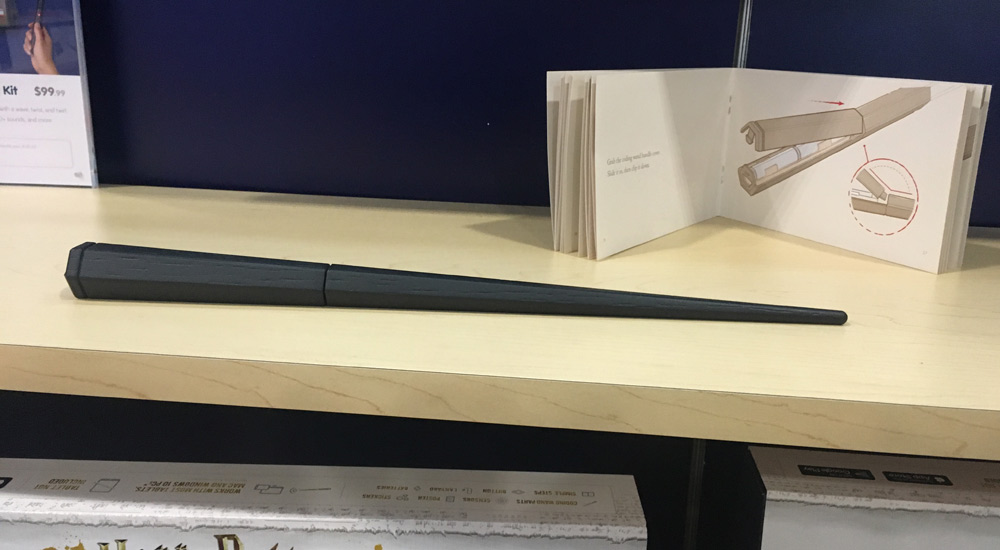
Wand is a wireless controller for a tablet, smartphone or laptop. They can play only one educational game based on the Harry Potter universe, which in words sounds primitive and as boring as any other ordinary educational set. Taking the wand in hand, it becomes clear that straightforwardness and the absence of additional difficulties are among the strengths of the project. When an imaginary spell and wave of a hand receive a response on the screen, a completely magical feeling arises.
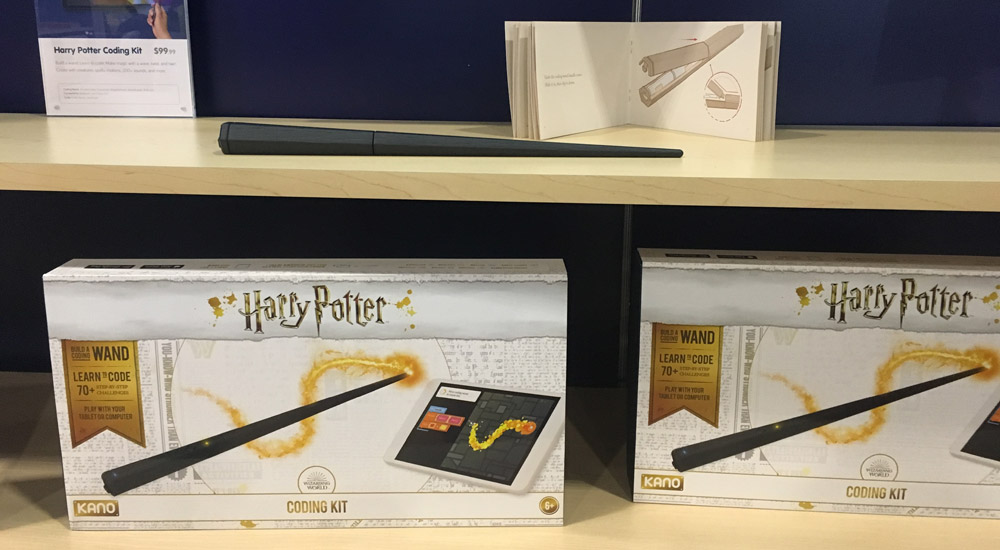
It’s all about respecting the magical universe of Joan Rowling and the very future owner of the wand. The gadget is stylishly packaged; under the outer white packaging there is a stylish black box, almost like magic wands from movies. The gadget is disassembled into parts, the future wizard will have to assemble it by inserting a board and batteries inside the case. The instructions describe the assembly and appointment of elements on the board - a great move. It turns out a stylish thing: for the sake of its design, the developers have sifted through all the magic props at the Warner Brothers studio.

Learning to program in the game takes place on a slightly modified Skretche. Spells serve as a condition for certain events. There is no plot, only about 70 puzzles and tasks on the basics of programming. As a reward for the performance of each is given an accessory for the avatar in the game. The graphics in the game are deliberately cartoonish, and this is the main drawback of the whole set. Simplified forms are in contradiction with the way the wand itself looks serious and presented. Good graphics are expensive, as is the Harry Potter license, so it’s pointless to scold a startup for saving. The price of a programmer’s own magic wand is $ 99.99.
Woobo. Another educational toy

Since the days of insanity at Ferbie, many companies have dreamed of replicating the success of a furry monster. In the case of startups participating in CES, the desire to make a sort of “smart Ferbie” is added - not just an electromechanical toy, but a useful gadget. The Woobo plush robot, which collected $ 200,000 on Kickstarter in October, is one of those attempts.
Externally, the robot looks like a cross between a teddy bear and a telepuzik. His face is an LCD touchscreen, pressing the right foot on which the menu is displayed. Touching the ears turns on the microphone, inactive for the rest of the time. The battery should be enough for 6-8 hours of play. The supported language is English, this year the Chinese version will be released. Russian, most likely, will never happen.

The toy combines the roles of a nanny, a children's encyclopedia and an electronic organizer. Woobo entertains the child with various games and jokes, answers questions, reminds brushing his teeth and doing household chores. The schedule is set by the parents from the smartphone, from there you can see the content available for Woobo. The library is constantly updated via Wi-Fi. Big fly in the ointment: the robot plays YouTube videos without indicating their source and cutting off the logos. In December, a smaller version without a screen Woobo Mini collected on Indiegogo only $ 20,000. The modest amount speaks for itself: this is not a ferb, no tamagotchi, or even a tablet. Although the toy is charming. For a robot with a screen asking for $ 149.
Wireless headphones
Nura. Adaptive Sound Technology
In 2019, it’s hard to talk about wireless headphones as a trend. This is not a trend, but a tangible and accessible reality given to us in the AirPods. Some companies, however, continue to push the boundaries of what a pair of headphones can give a person.

Startup Nura has been promoting the technology of adapting sound to the ear of a particular person for several years. At CES 2019, the company brought special headphones. When a person puts them on, the accessory checks the sound perception and creates a personalized profile. For this, the built-in microphone tests otoacoustic emission, a sound that is generated by the outer hair cells of the cochlea.
As a result, a person with a sensitive ear and one whose ear or was originally not so sensitive will receive different profiles. Music will be played for them in different ways, but they will hear the same thing. In Nura they say that “trying to create the perfect acoustic system, without taking into account the listener's hearing, is the same as trying to make glasses without asking“ who will wear them? ”.” In this sense, the startup technology really allows you to create the first “prescription headphones”.

At the company's stand proudly stood the main product, monitor headphones Nuraphone. They have a tactile driver that allows you to feel the bass skin, and inside the patch cup is a plug-in earphone. New - intra channel NuraLoop. These are completely wireless "plugs" connected by wire and connected to the sound source via Bluetooth. Both models are equipped with a noise reduction system. Watch out, Bose and Sony! In the city, the new sheriff. Nuraphone sold for $ 399, the final price of NuraLoop is still unknown.
AfterShokz. Now underwater!
The AfterShokz company is developing headphones with bone conduction technology . They can safely listen to music while cycling or jogging. The sound is transmitted around the external auditory canal, so that the listener does not remain isolated from the outside world.

At CES 2019, the company demonstrated another convincing argument in favor of bone conduction: the model AfterShokz Xtrainerz (read as cross-trainers). Headphones are protected from penetration of liquid and water according to the standard IP68. This is a very high level, so the headphones are not afraid of prolonged immersion in water - both fresh and salt. They are designed for swimmers and surfers.
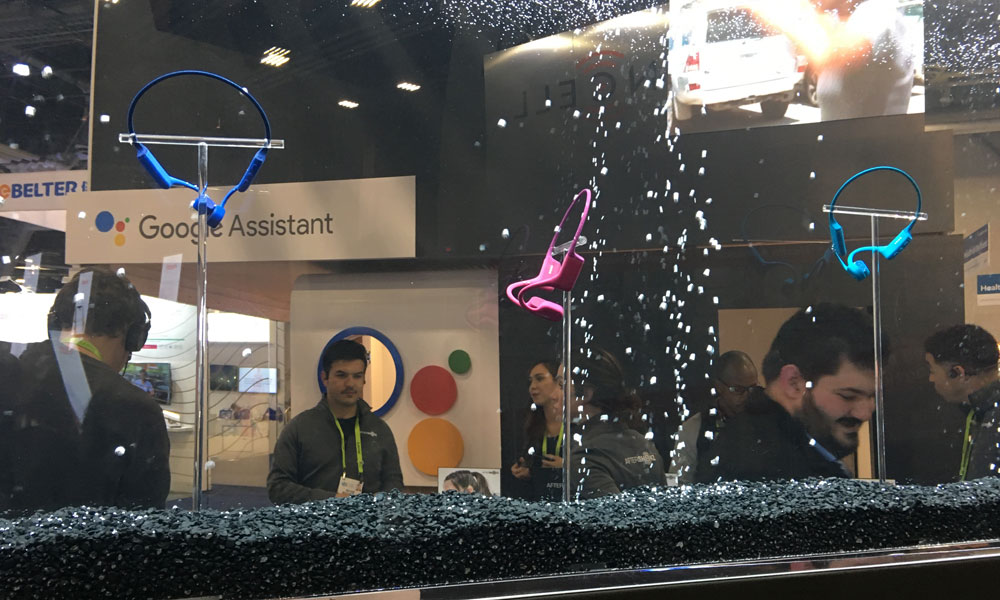
Among the minuses of the novelty, the absence of Bluetooth is worth mentioning, so the Xtrainerz headsets will not replace and train will not help. Music, podcasts and audiobooks are stored inside the gadget itself, for which 4 gigabytes are allocated. As in the case of previous models, the headband is made of titanium. The battery lasts for 6 hours, it fully charges in 1.5 hours. Headphones will go on sale in the second quarter of 2019 and will cost $ 149.95.
Strange things
Phonesoap. For those who do not part with a smartphone, even in the toilet
Phonesoap is no longer a start-up, but the Salt Lake City company regularly visits CES with updates to its core device. As is clear from the name of the company, it is a cleaning device for phones. "Soap" removes the gadget from the invisible layer of bacteria using two UV lamps. Greasy fingerprints remain in place, they will have to erase the good old microfiber cloth.

Externally, the Phonesoap 3 device looks like a case for tools or cosmetics. The size is large, so even fablets are placed. To clean the smartphone, put it inside and close the lid for ten minutes. There is a hole in the cover for the wire, and outside there are two USB ports for charging devices undergoing processing. A model with wireless charging - PhoneSoap Wireless will be on sale soon. “Soap” is already available for tablets, PhoneSoap XL, in which you can also disinfect baby bottles, nipples or toys. Some plastic things like covers from a smartphone after disinfecting for a while smell of burning plastic. The price of the third version of the gadget is $ 59.95.

According to a popular legend, more bacteria live on a smartphone than on a toilet seat. Most of them are completely harmless, but streptococcus with E. coli can start on smartphones that have been in the toilet. Phonesoap prevents infection, killing, according to the developers, 99.9% of bacteria on the body and inside technological gaps and holes. It is important to note that this is a consumer device, not a medical device. A smartphone that has visited the infectious diseases hospital should be additionally treated with special means.
Masu Glass. Smart gadget for sake
The next gadget is from Japan. It is called Masu Glass, it was developed by Yume Cloud. Masu is a traditional cup for sake, which is used during especially important events. The ancient masu were made of wood, they served as measures for measuring rice and at the same time as a container for sake, from which they drank it. Modern versions are more often made of plastic or varnished, because purists do not like how wood changes the taste of a drink.

Masu Glass - a gadget of transparent plastic, which is embedded LED. The light comes on when the cups are clinked or the sake is poured into them. The LEDs also flash to the music. Masu connects to a smartphone via Bluetooth, the number of cups connected is unlimited.
Glasses with LEDs have long been successfully manufactured in Shenzhen factories, including cups-masa. But, apparently, the creators of Masu Glass have more serious plans. The GLOW module, which serves as the heart of the cup, must also recognize the interests of users. If two people with similar preferences drink from Masu Glass, then the blinking of the LEDs will indicate that they have something in common. When and whether such functionality will be implemented is still unknown.
Serious news
Benjilock. Dreams Lead at CES
The startup Benjilock has a very moving story. In 2014, the future founder of this company, Robbie Cabral, was fired from “normal” work. On the same day his daughter was born. The unemployed father did not give up and decided to try his luck in the field of invention. He created a smart padlock that was simultaneously opened with a fingerprint and the usual key. The bottom line was to be able to close your locker in the gym or school, a backpack, a suitcase, a lock bag - and open it with one finger, no keys or a smartphone. Three years the inventor was engaged only in the project, without finding other work.
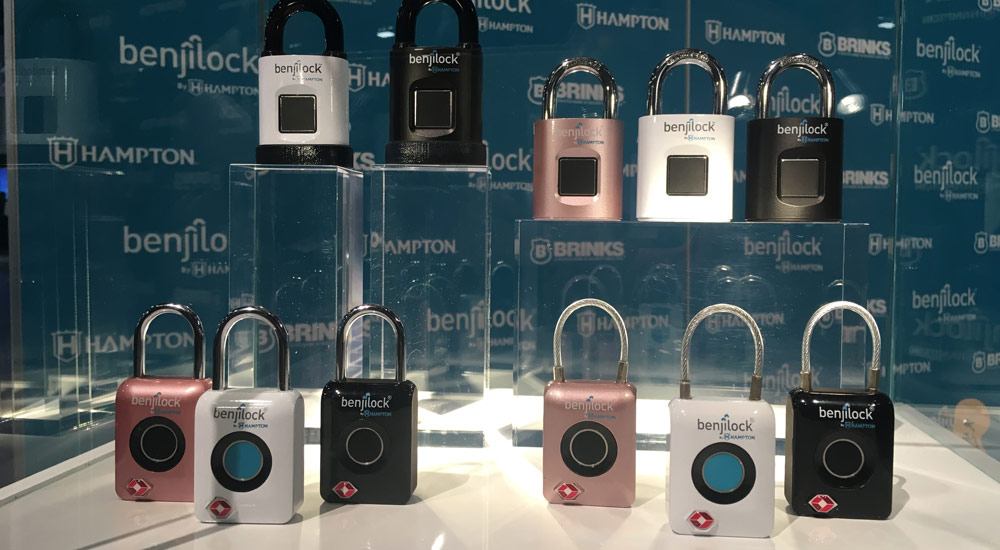
In 2017, Cabral first leased a place in the startup area at CES. Unique gadget noticed and even gave a reward for innovation. Using the new connections, the inventor took part in a reality show for Shark Tank entrepreneurs, where he attracted $ 200,000 in investment from businessman Kevin O'Leary. And then - again, luck: the rights to the castle bought a large corporation Hampton Products. After receiving the check, Cabral burst into tears of happiness: he could hardly believe that he had fulfilled his “American dream”.
Benjilock visited CES in 2019, already as part of Hampton. New on the stand - approved by the Transportation Security Administration (TSA) lock option for luggage. Externally, the device is different large-format fingerprint scanner and the lack of user keys. Master keys are held by TSA agents so that they can open locks during security checks at the airport. How good this idea is is a good question. The original version of the castle is still available, but it does not have approval from US officials.
"Traditional" Benjilock will cost $ 69. New, TSA approved, costs $ 49.
Chipolo. Innovative LTE Tracker and New Keychain Ball
Chipolo is one of the favorite brands of Madrobots, and we enjoyed visiting their booth during the exhibition. Slovak startup has created an effective network for finding lost things, which is based on the tracker keychain . It is attached to a bag or backpack, put inside the wallet, hooked to the keys, and then the keychain's position can be tracked on the map via a smartphone. Conversely, the lost smartphone is searched for with one click of a button on the Chipolo tracker.

Over the past year, the Slovaks have been actively involved in attracting third-party manufacturers to immediately embed Chipolo trackers or compatible with the “beacon” system in bags, wallets and backpacks. However, at CES you will not surprise anyone with your business sense, so the company demonstrated the Chipolo Go LTE tracker. Unlike its counterparts in the system, Go is a large cylinder measuring 10.5 by 2 centimeters. For massiveness, he pays support for GPS, LTE, Wi-Fi and Bluetooth, a replaceable battery for 6 months of operation and water resistance. "Search magic wand" is designed for luggage, bicycles, mopeds and other expensive things. Go was awarded the CES Award in the Wearable Devices category.
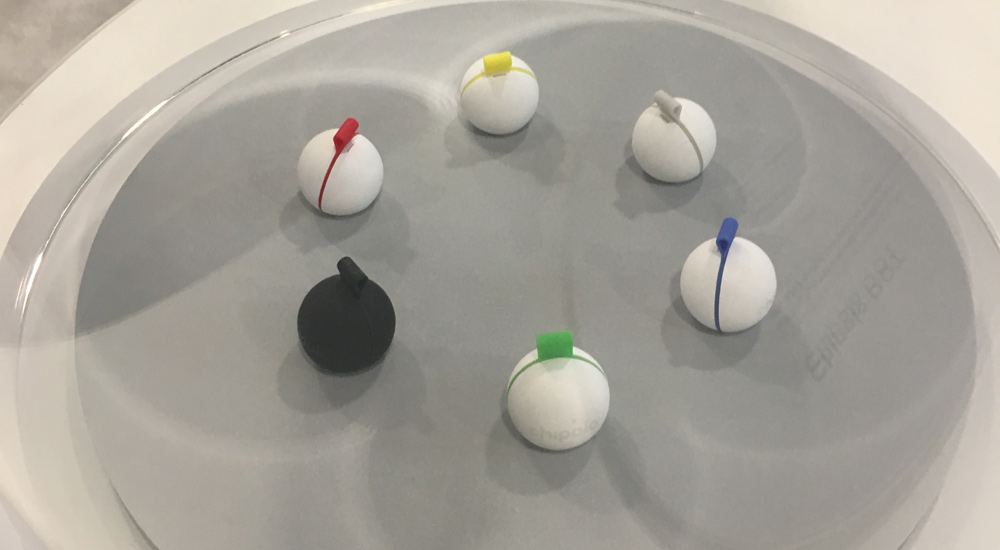
Chipolo Dot Bluetooth Keychain is an updated version of the company's main tracker, Chipolo Plus. Rather, it is Chipolo Plus on steroids. His form was changed from “pill” to “ball” in order to stand out among competing trackers. Dot is waterproof, equipped with a replaceable battery with a working life of 3 years, an even louder speaker and flashlight. That is, with the new Chipolo key fob, it is easy to look for keys in the dark, because it roars like a siren and glows.
The trackers will go on sale no earlier than the fourth quarter of 2019. Go cost will be about $ 150, Dot - $ 40.
Maternity gadgets
Owlet. Smart baby socks and smart belt for pregnant women
Speaking of smart technologies for motherhood, it is important to understand the social difference between Russia and the United States. In Russia, at least on paper, a woman has the right to receive paid long leave for childbirth and child care. In the United States, the right to decree is poorly developed, the length of leave granted is 4-6 weeks against a generous Russian 3 years. American women who have given birth have to either quit or hire a nanny. Therefore, the ability to automate the aspect of childcare is very attractive, and start-ups are thriving on this topic.
Even the Mirai botnet, which infects smart devices, does not discourage young parents from buying "electronic" nannies. Luddites, “experts,” in vain frighten mothers, that they are doing everything wrong by buying harmful, senseless, dangerous and soulless machines. The matrix comes, not otherwise. Startup Owlet is her first prophet.

The company is known for its tiny smart socks for babies called Smart Sock . The sock is equipped with a pulse oximeter and measures the heart rate of the newborn and oxygenation of the blood. The gadget transmits data to a special base station, from where it enters the application via Wi-Fi. The monitor is intended primarily for the prevention of sudden infant death syndrome. In the event of a dangerous situation, the Smart Sock sends an alert to parents on a smartphone.
If the children's smart sock is not a terrifying sign of the coming tyranny of cars, then the newest product just says that the last days have come. Owlet Band, a smart belt for pregnant women, monitors the child’s heart rate while he is in the womb. He also allows you to record and listen to the sound of the heartbeat of the fetus and automatically counts the contractions and movements of the baby. The sensors in the monitor are made of a special material DuPont Intexar and are almost the same.
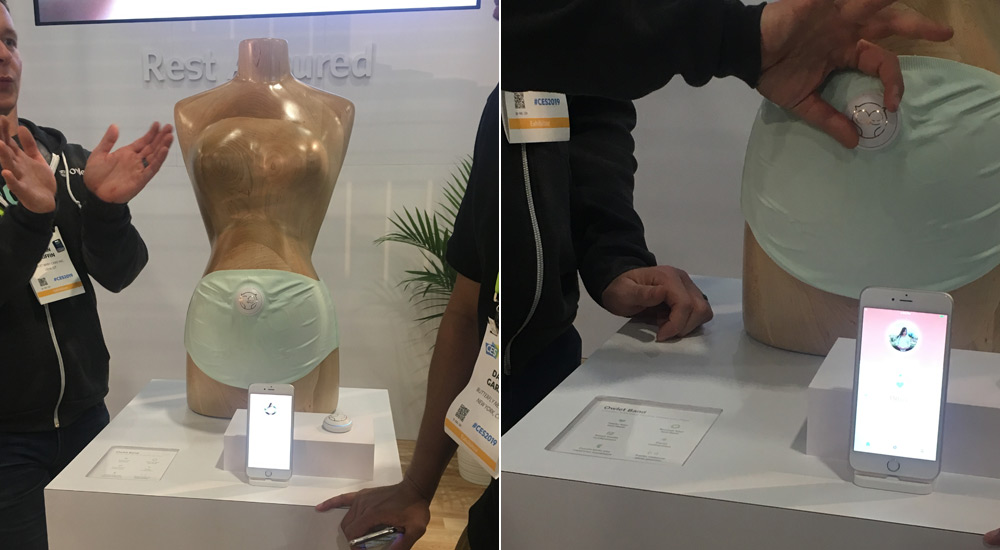
It is expected that the cost of the device will be about $ 300. Can it become another reliable bot? Shows time. So far, the smart belt has just received the CES Awards in the Best Wearable category.
Willow 2.0. The second version of the portable breast pump
California startup Willow is one of the few at the exhibition that definitely brings the future of consumer technology closer. He deals with a useful and rare topic: breast pumps. A lot of jokes were sent to the developers at CES 2017, when they announced the first version of the gadget. Nevertheless, they continued to work and in 2019 brought Willow 2.0, an improved and updated portable pump.
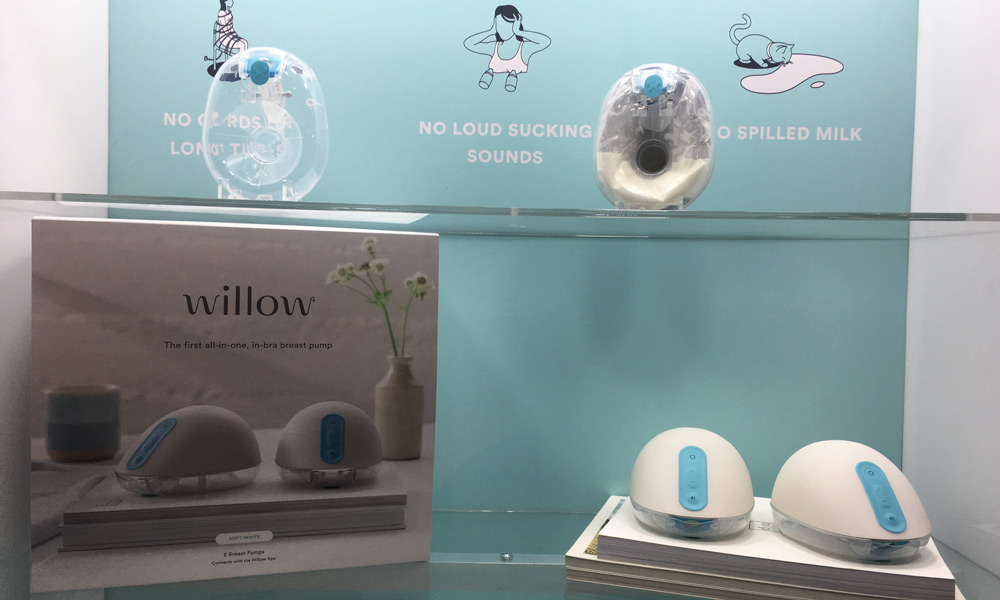
A conventional breast pump is a brutal-looking device for expressing milk. During its use it is impossible to do other things. The essence of the pump Willowthat it is placed in a bra and leaves her hands free, and the mother is mobile. That is, she can take a couple of “cups” with her to work and quietly turn them on. Milk is collected in a disposable non-spill bag inside the pump, then to pour it into a bottle and give it to the baby.
The most important difference of the second version is that part of the body is made of transparent plastic. Specifically, the flange became transparent - a detail that is superimposed on the chest. Now Willow is easier to evenly secure on the chest. The second half of Willow, in which the pump is located, makes a pleasant click when it is fixed to the flange. He indicates that the gadget is assembled correctly. Willow 2.0 has its own application, but you can use the breast pump without it.

Willow 2.0 is still as expensive as the original pump. The second version will cost $ 500, there are 48 interchangeable sachets included. The stock of new packages will have to be purchased separately (a pack of 24 pieces costs $ 12). However, it is not a toy. This is an incredibly useful device.
Elvie Pump. Silent Portable Smart Breast Pump
Of course, start-up Willow deserved a lot of praise for “opening up” the topic of breast pumps. Start-up Elvie, known for its kegel simulator , followed him and made his own version of a portable pump. More competition is better for users.
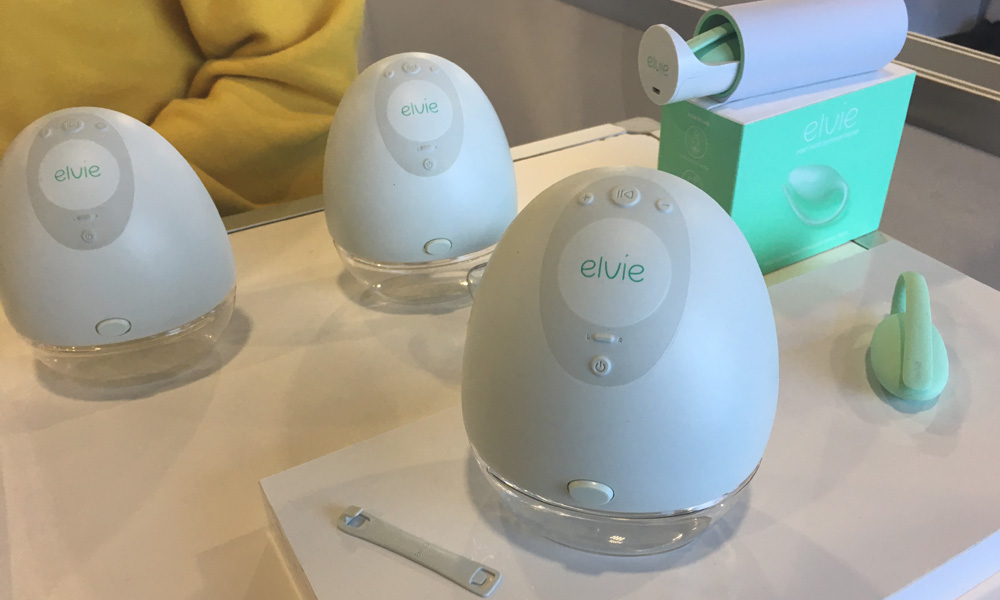
Fortunately, Elvie cannot be spoken of as a complete “clone” of Willow. This pump is also embedded in a bra and does not prevent a woman from doing other things. It is quiet and does not buzz during work, and detailed settings for comfortable pumping are available in the application. However, the strongest advantage is the lack of disposable bags. Milk is collected in a reusable bottle that is attached under the flange and under the pump. Included with the device are two bottles, more bought separately.

Traditional breast pumps are equipped with such bottles, so the Elvie Pump developers have not invented anything new. They adapted the old and new ideas so that the end user was comfortable, for which he received the CES Innovation Award in the category “Wearable Technology”.
So far, the device is available in the UK, and in the first quarter of 2019, sales will begin in the United States at a price of $ 479. Then Elvie plans to sell a smart breast pump all over the world.
Some of the new CES 2019 products will definitely be included in the Madrobots catalog. However, we would like to know again what you think about these gadgets. Share your opinion in the comments!


Only registered users can participate in the survey. Sign in , please.
